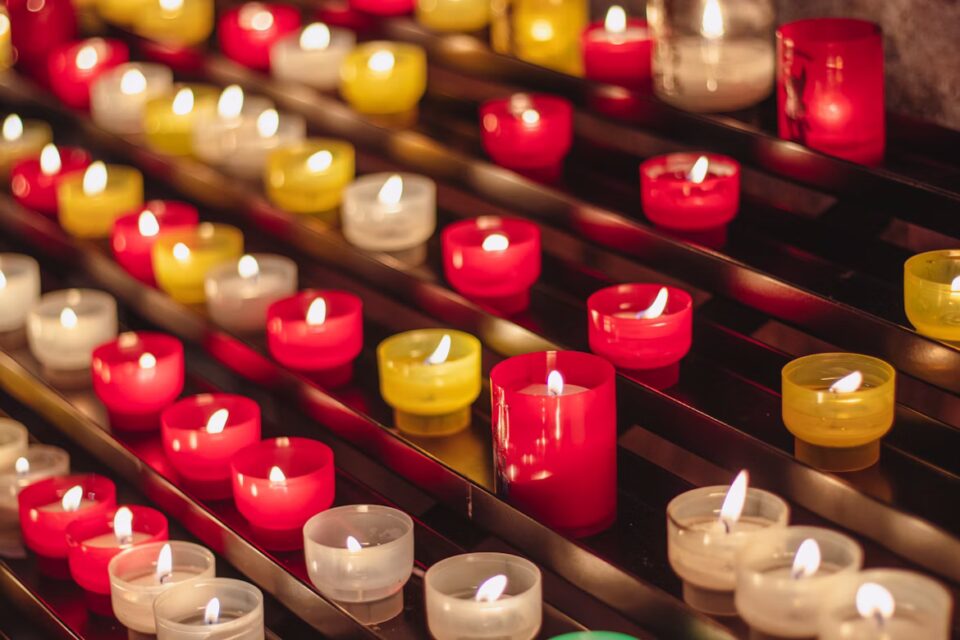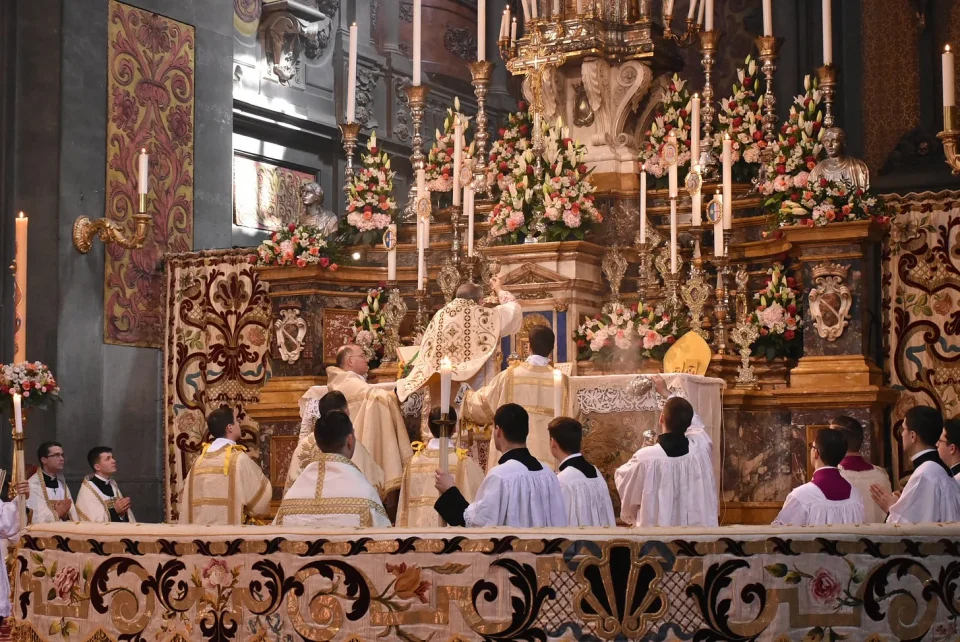By Dave Armstrong, National Catholic Register, March 31, 2025
Dave Armstrong is a full-time Catholic author and apologist, who has been actively proclaiming and defending Christianity since 1981. He was received into the Catholic Church in 1991. His website/blog, Biblical Evidence for Catholicism, has been online since March 1997. He also maintains a popular Facebook page. Dave has been happily married to his wife Judy since October 1984. They have three sons and a daughter (all homeschooled) and reside in southeast Michigan.
In heaven, Jesus is worshiped not only as King but as the Lamb still bearing the marks of love.
 In the Old Testament sacrificial system, there was a difference between the sacrifice itself and the offering of the sacrifice to God.
In the Old Testament sacrificial system, there was a difference between the sacrifice itself and the offering of the sacrifice to God.
The Bible describes the procedure that took place on the Day of Atonement (Yom Kippur), in Leviticus 16:11-16. First, the sacrifice was made by the high priest, and then blood was taken from it (both from a bull and a goat) into the Holy of Holies (the holiest part — the inner sanctum — of the Temple, and the Tabernacle, before the Temple) and sprinkled onto the mercy seat between the two cherubim, which was above the ark of the covenant, where God was specially present (Exodus 30:6).
The second “offering” to God was separate and distinct from the sacrifice of the animals. Before God gave Moses the Law on Mount Sinai, in Egypt, before the exodus, the feast of Passover (Exodus 12:5-13), which included a sacrifice of the Passover lamb, was a simpler form of the same sort of ritual. The famous messianic passage of Isaiah 53:4-7 alludes to the Messiah being “like a lamb that is led to the slaughter, and like a sheep that before its shearers is dumb” (53:7). The New Testament continues this analogy of Jesus as a sacrificial lamb: “the lamb of God” (John 1:29, 36), “Christ, our paschal lamb, has been sacrificed” (1 Corinthians 5:7), and “the precious blood of Christ, like that of a lamb without blemish or spot” (1 Peter 1:19). …
Continue reading >>>>>>>>>>





 In the Old Testament sacrificial system, there was a difference between the sacrifice itself and the offering of the sacrifice to God.
In the Old Testament sacrificial system, there was a difference between the sacrifice itself and the offering of the sacrifice to God.

